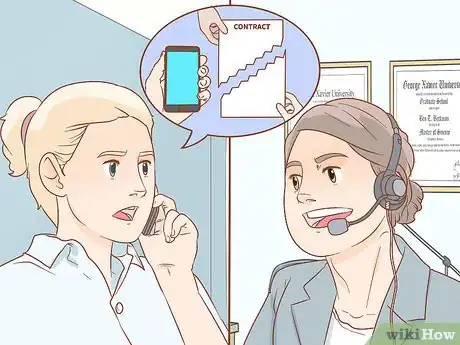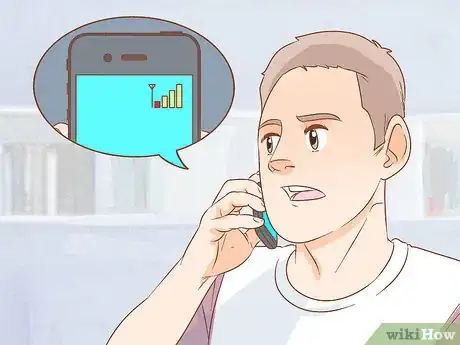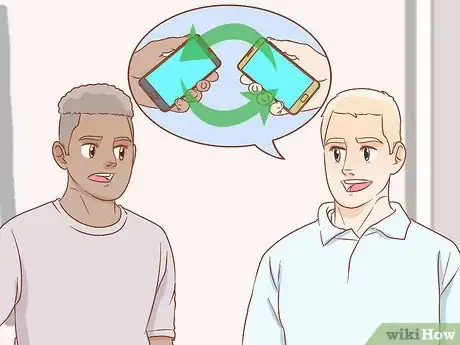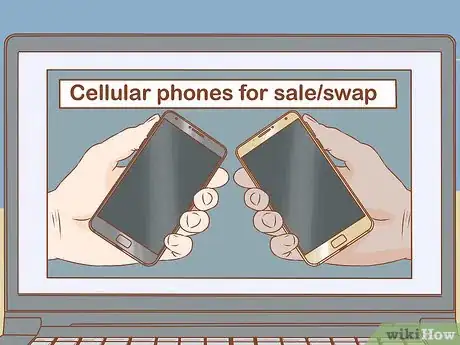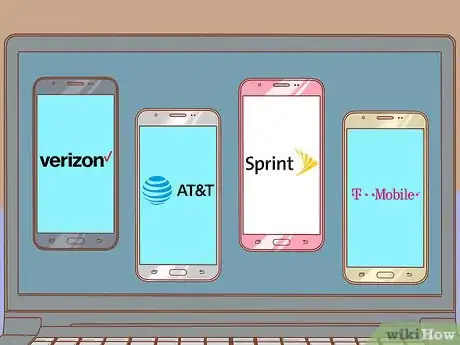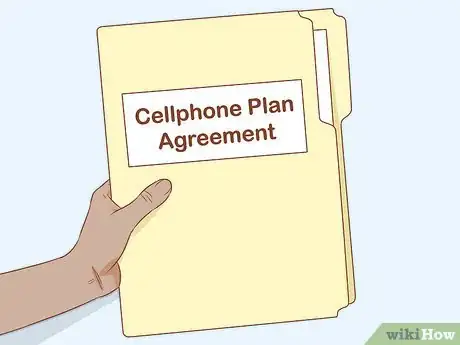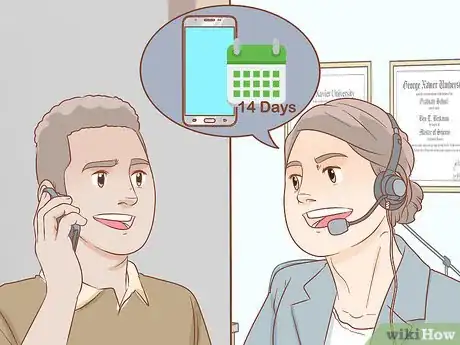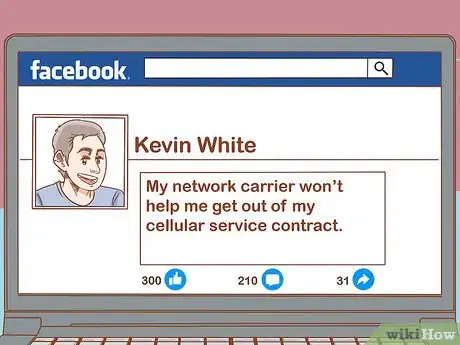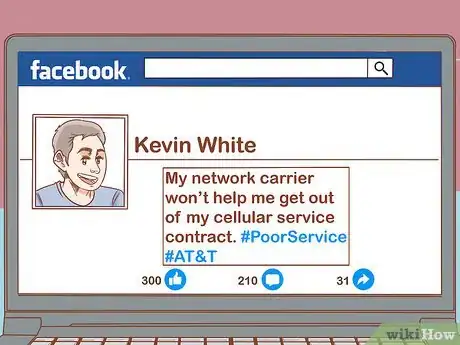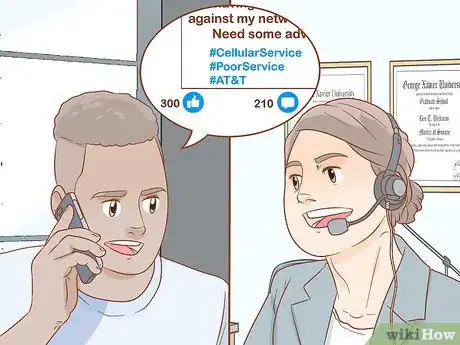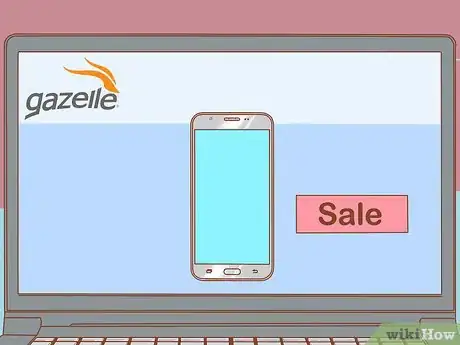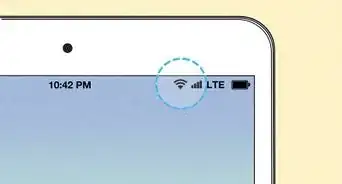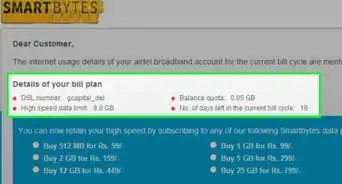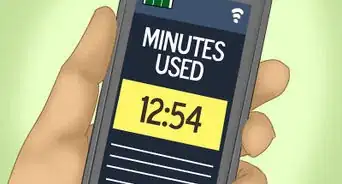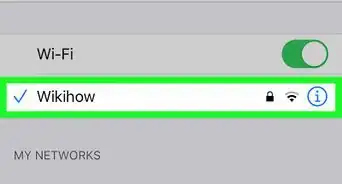This article was co-authored by Clinton M. Sandvick, JD, PhD. Clinton M. Sandvick worked as a civil litigator in California for over 7 years. He received his JD from the University of Wisconsin-Madison in 1998 and his PhD in American History from the University of Oregon in 2013.
There are 10 references cited in this article, which can be found at the bottom of the page.
This article has been viewed 1,658,806 times.
In today’s environment, a cellphone is as close to being a human appendage as something can get, without actually being attached to your body. And dissatisfaction—on one level or another—with cellphone plan carriers is pretty much a universal lament. Terminating a cellphone contract before its end date can be a daunting task, even for the most disgruntled customer. However, depending on your particular situation, there are methods that may be assist you in your efforts to cancel the agreement.
Steps
Contacting Customer Service
-
1Notify your carrier that you want to terminate. This is a logical first step in attempting to get out of your contract. Unfortunately, it’s probably also the least likely to succeed—unless you have some very valid reasons for the request. And even then, it will be difficult.
-
2Back up your reasons for the termination request. Complaints such as continuous dropped calls and chronic poor reception are legitimate reasons for requesting relief. If poor service is your main complaint, then keep a log of everything that goes wrong. Collect your data over a week or two, and have it available when you speak with the customer service representative.[1] Other reasons that may result in success are:
- You’re moving to a location where the carrier doesn’t provide service. Usually, you’ll need a convincing reason for the move, such as an employment change or death in the family.
- You’ve been terminated from your employment, and simply can no longer afford your contract.[2]
Advertisement -
3Request to speak with a manager. It’s a good bet that you won’t have any success with a lower-tier customer service representative. If that’s the case, ask to speak with a manager. This individual may have more authority when it comes to making decisions on terminating the contract.[3]
-
4Contact the Better Business Bureau (BBB). If your complaint relates primarily to poor phone service, file a complaint with the BBB. You can also register a complaint with the Federal Trade Commission. Once you’ve done that, try contacting your carrier again, to let them know the actions you’ve taken. You may find them more receptive.[4]
Selling Your Plan
-
1Contact your carrier to determine the process. Let your carrier know that you’d like to sell your plan, and find out what’s needed to put that into effect. You may be told that this can be done with what’s known as an Assumption of Liability. This is a transaction that legally transfers your existing contract to another person.[5]
- The person taking over your plan will most likely be instructed by your carrier to read the carrier’s Terms and Conditions of Agreement, and agree to abide by them.
- Your carrier may also have an Assumption of Liability form, which will probably have to be signed both by you and the person taking over the contract.
-
2Find someone willing to buy into your existing plan. The odds are that you either know someone, or have access to someone, who’s looking to change his or her cellphone plan. Ask around to your friends and family. You could also post a query on your social media sites. Obviously, make sure you’re dealing with someone who’s reliable and financially stable, if you expect the carrier to approve the change.[6]
-
3Consider swapping plans with someone. If you’re not having any success finding someone to buy your plan, you might want to look into swapping plans, in which case you literally switch your plan with someone else’s. You’re a bit more limited in this scenario, because you’ll need to find an individual who currently has a plan you’re interested in—and vice versa.[7]
-
4Think about using an online service to sell or swap. If you either don’t know anyone to sell your plan to or swap with, or you’d just as soon not be bothered looking around, there are services that will do it for you.
- Conduct a browser search, and you’ll find a number of companies willing to assist you. However, expect to pay a fee for the service.[8]
- Obviously, do your homework on the company you’re thinking of using. Ask around to see if anyone you know has ever used the company before. You can also do a BBB search to see if the company is listed there, and what its rating is.
Finding a Different Carrier to Help You
-
1Determine the amount of your existing Early Termination Fee (ETF). One of the reasons people don’t leave a carrier they’re unhappy with is because of the dreaded ETF. However, carriers do prorate their ETF, basing the amount owed on the time remaining in your contract.[9] Call your carrier to determine the amount you’d be liable for if you terminated your agreement. You can also look here for an ETF calculator.
-
2Check competing major cellphone plan carriers. Once you’ve figured out what your ETF is, research other major carriers (the major carriers are usually considered to be Verizon, AT&T, Sprint, and T-Mobile[10] ) to find a plan that works for you. Once you’ve done that, contact the carrier to see if it would be willing to absorb your ETF if you made the switch to their service.[11]
-
3Look into alternative carriers. You don’t have to be locked in to one of the major carriers to get a satisfactory cellphone plan. It may be worth your while to consider:
- A smaller local carrier. These carriers (like Cincinnati Bell and Cellular South) usually offer a variety of fairly cheap plans. However, you’d have to check as to whether or not the carrier requires a contract. Most—if not all— smaller local carriers have nationwide calling. You may even find some that are willing to pay your current ETF if you migrate to their service.[12]
- Mobile Virtual Network Operators (MVNOs). Unlike the major carriers, these service providers (such as Virgin Mobile and Boost Mobile) don’t have their own network infrastructure. Rather, they purchase the excess capacity of the larger carriers.[13] Many MVNOs don’t require contracts. However, you’d have to check with the individual carrier to see if it would be willing to pay your ETF on an early termination of your existing contract.
Assessing Your Current Contract
-
1Obtain a copy of your contract from your carrier. If you don’t have a copy of your cellphone plan agreement, contact your carrier to get a copy. If for some reason the carrier doesn’t have it, then it's possible that there is no contract. That could be your way out. This is probably unlikely to happen, but you never know.[14]
-
2Check the contract for any terms referencing contract modifications. When you do get your contract, read through it carefully. See if there are any terms that talk about potential modifications to the agreement, and make note of them.
-
3Determine if modifications were made to the original contract terms. Here’s where you could find a possible escape route. It’s important that you note any changes as soon as they occur.
- If the contract makes no reference to future modifications, and your agreement terms were modified by the carrier during the contract period, you could claim a breach of the agreement. Be aware, however, that many of these contracts do have a provision that says the carrier can change the agreement at any time.[15]
- Even if the contract contains a term addressing future modifications, you should be able to break the contract if the change is “materially adverse” to you. Granted that’s kind of a nebulous term, but the reality is that if the carrier has changed rates, or added small fees that weren’t there when you signed the agreement, you’ve probably met the “materially adverse” threshold.[16]
Taking Advantage of the Grace Period
-
1Find out if there’s a grace period. If you’ve just signed up for a plan, and are struck with instant buyer’s remorse, don’t wait to take action. You probably have a grace period (usually 14 days) within which you can cancel the agreement. Check your contract immediately, or call the carrier to find out the exact timeframe for cancellation.[17]
-
2Follow the proper procedure for cancelling. Determine if there’s a particular method that you have to use to take advantage of the grace period cancellation provision. See if merely speaking with a customer service representative is enough, or if you have to submit a request in writing.
-
3Return the phone. Assuming you haven’t bought your phone outright from the carrier, obviously they’re going to want it back. Again, find out how the carrier wants that done, and act accordingly. Also, don’t be surprised if you’re assessed a restocking fee of about $35.[18]
Using Social Media
-
1Air your grievances on social media sites. If you have a legitimate complaint against the carrier, and you’ve had no success dealing with the various levels of customer service, you can always take your gripe online. Obviously, the more Facebook or Twitter followers you have, the better. And don’t hesitate to encourage your readers to re-post what you’ve written.
-
2Use appropriate hashtags. Mention the carrier in the hashtag to your posts. You want to make sure that the carrier is specifically referenced, so that other dissatisfied customers of the company can find your posts more easily.
-
3Notify customer service if you’re getting significant activity. If you find that your posts are getting a lot of views, you might want to consider contacting your carrier’s customer service department again, to let them know of the success of your campaign. They’d really prefer not to have their company’s public relations crisis management team get involved in the dispute if at all possible. That might be enough for them to let you go without a fight.[19]
Ending the Contract Per the Terms of the Agreement
-
1Consider paying the ETF. Sometimes it just pays to fork over the ETF, and be done with the aggravation. If you’ve made up your mind that this is the route you want to take, find out the exact amount you owe by contacting the carrier directly.
-
2Cancel the contract and pay the fee. Notify the carrier of your decision. You may have to do this by phone, so a terribly distraught customer service representative can try to convince you to ease his or her pain by staying with the company. Maybe they’ll offer you an incentive to stay, like a phone upgrade even if you’re not due for one. If an incentive doesn’t do it for you, find out how the ETF will be paid, cancel, and bid the carrier farewell.
-
3Think about selling your current phone. You’re probably planning on moving to a new carrier, and taking advantage of one of their phone offers (especially since trying to convert your current phone to a new carrier’s system can be a hassle, at best). If that’s the case, think about selling your phone as a way of offsetting some of the ETF you had to pay. Companies like Gazelle.com and Glyde.com handle these types of transactions.[20]
References
- ↑ http://www.wired.com/2014/07/carrier-contract-freedom/
- ↑ http://lifehacker.com/5913869/how-to-get-out-of-your-cell-phone-contract-without-paying-termination-fees
- ↑ http://www.wired.com/2014/07/carrier-contract-freedom/
- ↑ https://www.pcmag.com/archive/how-to-get-out-of-your-mobile-phone-contract-302987
- ↑ http://cashmoneylife.com/transfer-your-cell-phone-contract-avoid-paying-fees/
- ↑ http://www.wired.com/2014/07/carrier-contract-freedom/
- ↑ http://www.wired.com/2014/07/carrier-contract-freedom/
- ↑ http://lifehacker.com/5913869/how-to-get-out-of-your-cell-phone-contract-without-paying-termination-fees
- ↑ https://www.pcmag.com/archive/how-to-get-out-of-your-mobile-phone-contract-302987
- ↑ http://www.csmonitor.com/Business/Saving-Money/2013/0224/Phone-plans-101-breaking-down-the-major-carriers
- ↑ http://www.wired.com/2014/07/carrier-contract-freedom/
- ↑ https://www.pcmag.com/archive/10-small-carriers-with-great-phones-251950
- ↑ http://www.mobile-virtual-network.com/p/mvno-explained.html
- ↑ https://www.pcmag.com/archive/how-to-get-out-of-your-mobile-phone-contract-302987
- ↑ https://www.pcmag.com/archive/how-to-get-out-of-your-mobile-phone-contract-302987
- ↑ http://consumer-law.lawyers.com/consumer-contracts/the-two-main-types-of-cell-phone-contracts.html
- ↑ http://www.digitaltrends.com/mobile/get-smartphone-contract-without-penalties/
- ↑ http://www.digitaltrends.com/mobile/get-smartphone-contract-without-penalties/
- ↑ https://www.pcmag.com/archive/how-to-get-out-of-your-mobile-phone-contract-302987
- ↑ https://www.pcmag.com/archive/how-to-get-out-of-your-mobile-phone-contract-302987
- ↑ http://www.wired.com/2014/07/carrier-contract-freedom/
- ↑ http://consumer-law.lawyers.com/consumer-contracts/the-two-main-types-of-cell-phone-contracts.html
